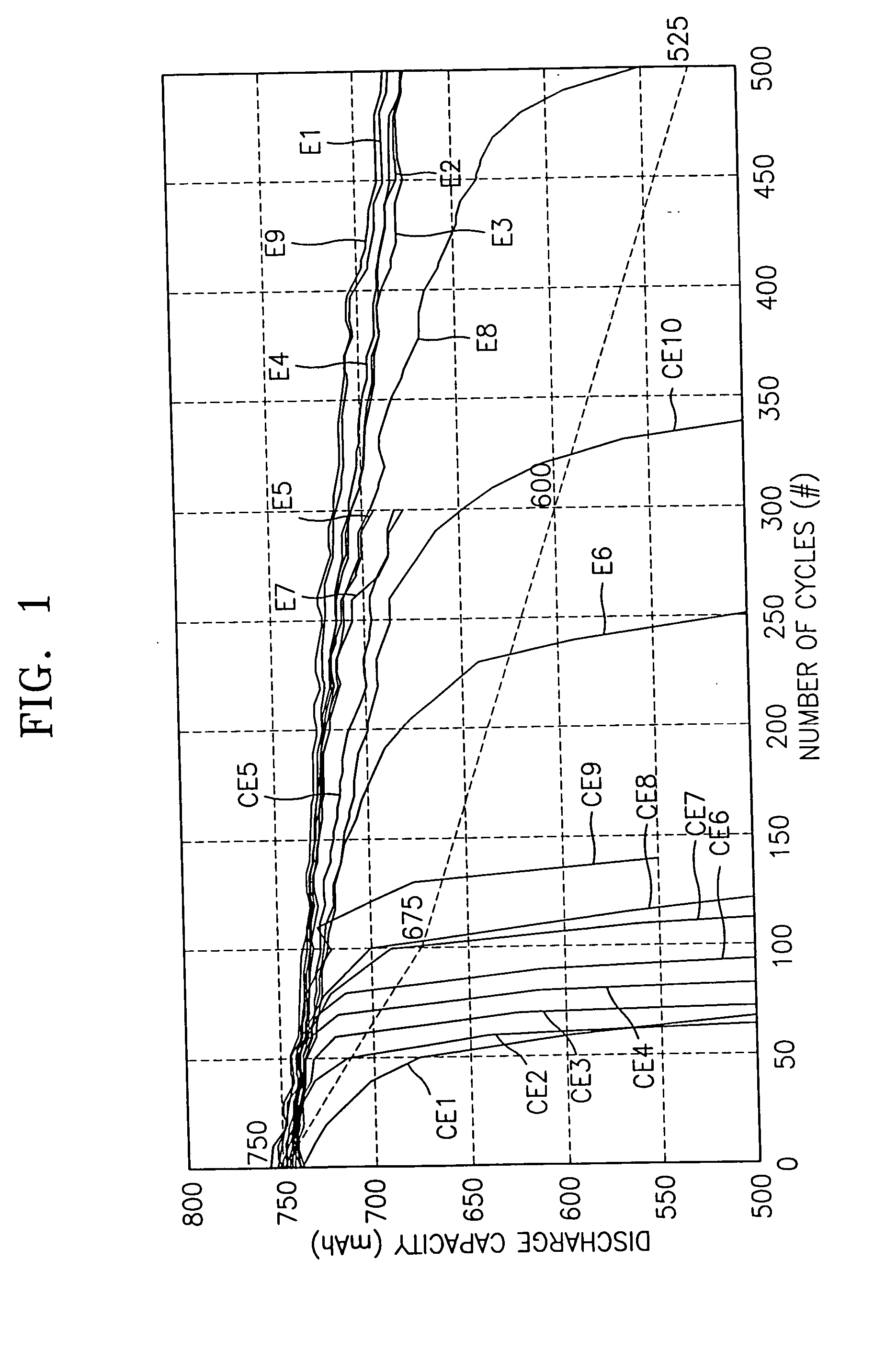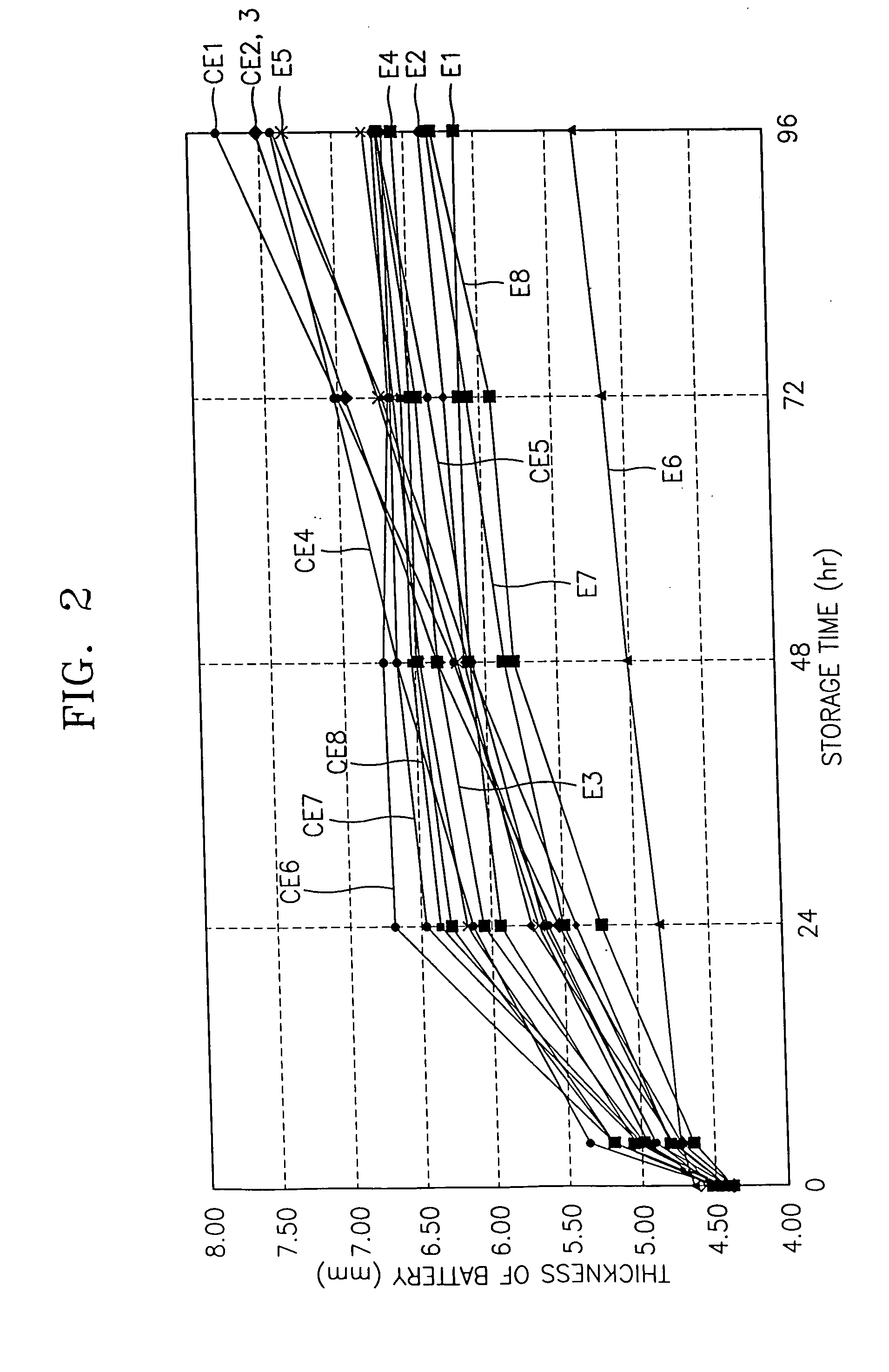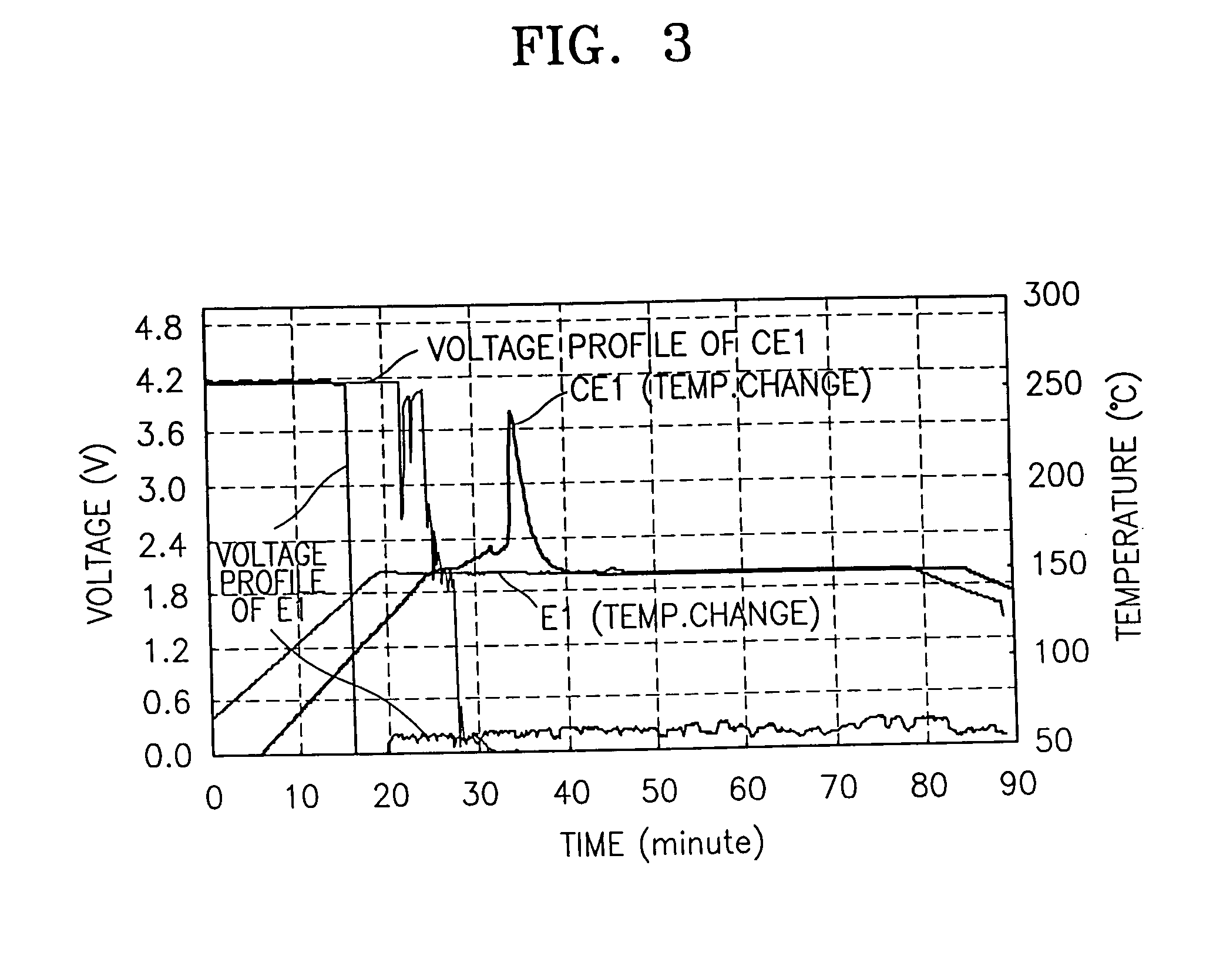Lithium battery having effective performance
- Summary
- Abstract
- Description
- Claims
- Application Information
AI Technical Summary
Benefits of technology
Problems solved by technology
Method used
Image
Examples
example 1
[0056] To 100 ml of a mixed solvent containing ethylene carbonate(EC), γ-butyrolactone (GBL), ethylmethyl carbonate (EMC) and fluorobenzene (FB) in a volume ratio of 15:25:50:10 was added 2 ml of vinylene carbonate (VC), and LiPF6 was dissolved therein in a concentration of 1.0 M, thereby preparing a nonaqueous electrolytic solution.
[0057] A 463450 prismatic type battery was manufactured using the prepared nonaqueous solvent by a general manufacturing method.
[0058] That is, 92 g LiCoO2 as a cathode active material, 4 g polyvinylidene fluoride (to be referred to as “PVDF”) as a binder, 4 g carbon black (Product name: “Super-P”) as a conductive agent were dissolved in 23 g N-methyl-2-pyrrolydone (NMP), followed by ball milling for about 5 hours to provide a cathode active material composition.
[0059] The cathode active material composition was coated onto a 20-μm-thick and 42.5-cm-wide aluminum foil using a 150-μm-gap doctor blade, subjected to drying and rolling, and cut into a cat...
examples 2 through 9
[0063] 463450 prismatic type lithium batteries were manufactured in the same manner as in Example 1, except that compositions of the nonaqueous electrolytic solution were varied as shown in Table 1.
PUM
 Login to View More
Login to View More Abstract
Description
Claims
Application Information
 Login to View More
Login to View More - R&D
- Intellectual Property
- Life Sciences
- Materials
- Tech Scout
- Unparalleled Data Quality
- Higher Quality Content
- 60% Fewer Hallucinations
Browse by: Latest US Patents, China's latest patents, Technical Efficacy Thesaurus, Application Domain, Technology Topic, Popular Technical Reports.
© 2025 PatSnap. All rights reserved.Legal|Privacy policy|Modern Slavery Act Transparency Statement|Sitemap|About US| Contact US: help@patsnap.com



